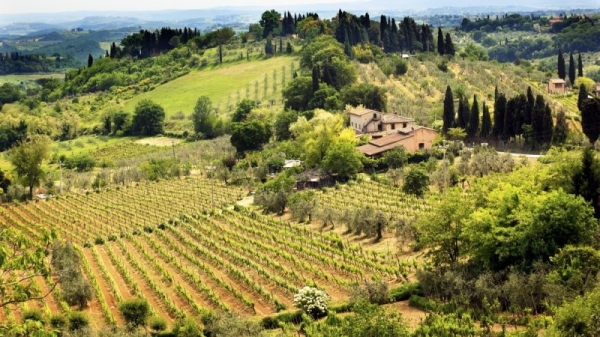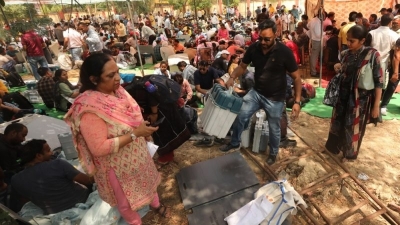Expert: Investment in integrated pest management paying off in Italy

The number of farms implementing integrated pest management (IPM) in Italy has skyrocketed over the past few years. EURACTIV Italy spoke with Donato Rotundo from farmers’ association Confagricoltura to learn more about the impact this has had and how this success can be built upon.
Integrated pest management (IPM) is an ecosystem-based strategy that focuses on pest management through a combination of techniques applied in a hierarchical order to minimise the use of chemical plant protection products.
It is also an important part of the discussion on achieving the target set in the EU’s flagship food policy, the Farm to Fork strategy, which calls for the use and risk of pesticides to be slashed in half by 2030.
How successful has the adoption of IPM practices been in Italy?
Integrated pest management was implemented in Italy long before the advent of the new European directive.
In just a few years, the National quality system for integrated production (NQS) has also seen its numbers grow very significantly: at the end of 2016, there were 3,243 certified companies and the dedicated area was just over 61 thousand hectares; four years later, there are more than 17,000 companies (+528%) and certified production covers almost 280 thousand hectares (+457%).
What impact has this had on the reduction of pesticides?
Excellent results have also been obtained in terms of use: from 2011 to 2020 there has been a gradual decrease in the quantities put on the market, representing a 15% decrease for plant protection products from 142,425 to 121,550 tons and active ingredients with a 20% decrease from 70,690 to 56,557 tons.
Significant progress is also recorded in toxicity classes, in fact, in the period 2011-2020, the amount of very toxic and toxic products decreased significantly (45.6% decrease).
Another interesting figure is the amount of plant protection products distributed per unit of agricultural area (from 5.5 kg/ha in 2011 to 4.5 kg/ha in 2020), which, although with some limitations, provides a picture concerning the pressure on the land exerted.

Germany bets on integrated pest management for halving pesticide use
Implementing integrated pest management (IPM) is part of Germany’s toolbox to achieve the 50% reduction target the EU could set in its new pesticide legislation. But in practice, many hurdles stand in the way.
What measures are in place to encourage adopting integrated pest management in Italy?
Besides various measures in the EU’s Common Agricultural Policy (CAP), another key aspect for the spread of integrated pest management is incentives related to on-farm innovation.
A great impulse to the renewal of the machinery fleet, in recent years, has been given by the 4.0 tax credit for tangible and intangible assets.
This has allowed many farms to equip themselves with means that, thanks to automatic guidance managed by satellite and the possibility of carrying out variable-rate treatments through the use of prescription maps, manage to combine economic and environmental sustainability, reducing inputs of technical means (diesel, fertilisers, pesticides, irrigation) while increasing yields and production equity.
What percentage of pesticide reduction does Italy need to achieve and how is integrated pest management a priority in this goal?
According to reports from the Commission, Italy is expected to reduce its chemical plant protection products by 62% – the highest target among the various member states – and the most hazardous ones by 54%.
As already specified in Italy, work has already been going on for a long time in order to gradually reduce the use of agrochemicals.
Even the comparative analysis, produced by Eurostat, shows that Italy is among the most virtuous countries in this regard. Thus, the reduction targets for our country appear highly contradictory and penalising.
What obstacles stand in the way of a wider spread of IPM practices in Italy?
Reducing the use of plant protection products is only possible if effective and economically viable alternatives are available on the market that farmers can use.
The loss of many chemicals important to EU agriculture, found in recent years, has highlighted that the absence of viable alternatives puts entire production sectors in crisis.
For these reasons, EU policy on the authorisation and use of plant protection products should put the environmental and economic sustainability of agricultural production on an equal footing. This means that a transition to a reduction in the use of pesticides must be made at a pace that allows for the introduction and availability of alternative methods.
New crop protection solutions and technologies will help to successfully increase the implementation of integrated pest management.
Precision agriculture, biocontrol, varietal selection, plant breeding, and drone application play an essential role in reducing the need for conventional plant protection products, and regulation must be adapted to allow these technologies to be developed and applied properly in the EU.
The availability of new tools for farmers must also be promoted primarily by EU institutions, through public investment programs.

Integrated pest management struggling to gain ground in France
Integrated Pest Management (IPM) is struggling to gain traction in France, despite being promoted by both the EU and the French authorities and having proven benefits for farmers and the environment.



